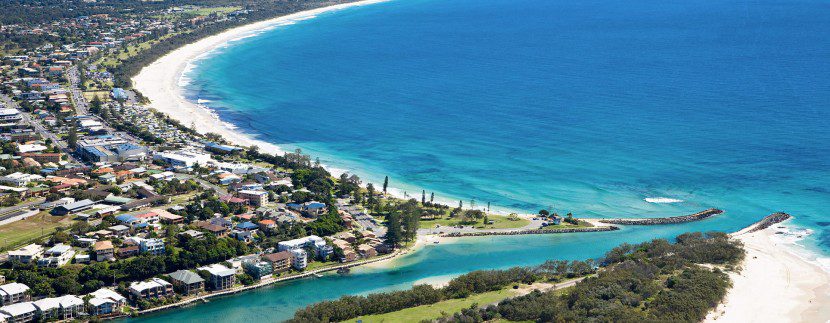How did Kingscliff become Kingscliff?

All the locals know that Kingscliff is ‘Heaven on Earth’. But how many of us know the history of this gorgeous beachside village we call home?
The name
Kingscliff has been known by several names. It was first named Sutherland Point in 1840 in honour of British nobleman, the Duke of Sutherland. In the early years of European settlement the area became known as Cudgen Headland. An early property developer subdivided some of the land in 1915 and called it the ‘Kingscliff Estate’. The name Kingscliff was then adopted to avoid confusion with mail addressed to nearby Cudgen. The origin of the name Kingscliff remains unknown. It is speculated it may relate to a beach suburb of Brighton in England, or a variation of the popular Victorian resort ‘Queenscliff’.
Aboriginal history
For thousands of years before European settlement the Aboriginal people lived in tribal camps scattered along the Far North Coast of New South Wales. There is evidence of camps around the foreshore of Cudgen Creek as this area was rich in flora and fauna. They gathered berries, hunted and fished.
European settlement
The first recorded European visitors to the Tweed Coast were Captain James Cook and those aboard HMS Endeavour, sailing past on 16 May 1770. They named Mount Warning (known to the Aborigines as Wollumbin) and Point Danger due to the dangerous reefs in the area. However, it was Surveyor Robert Dixon and a party of men from Brisbane who placed Kingscliff on the map. They established a survey post on Kingscliff Hill in June 1840.
During the 1840s timber from the hinterland started being cut and shipped out on the Tweed River, and the railway reached the district in 1903.
By the 1930s Coolangatta and Tweed Heads started becoming popular tourist destinations. Kingscliff eventually followed suit, evolving into the vibrant seaside town we know and love today.
Source: NSW Government











